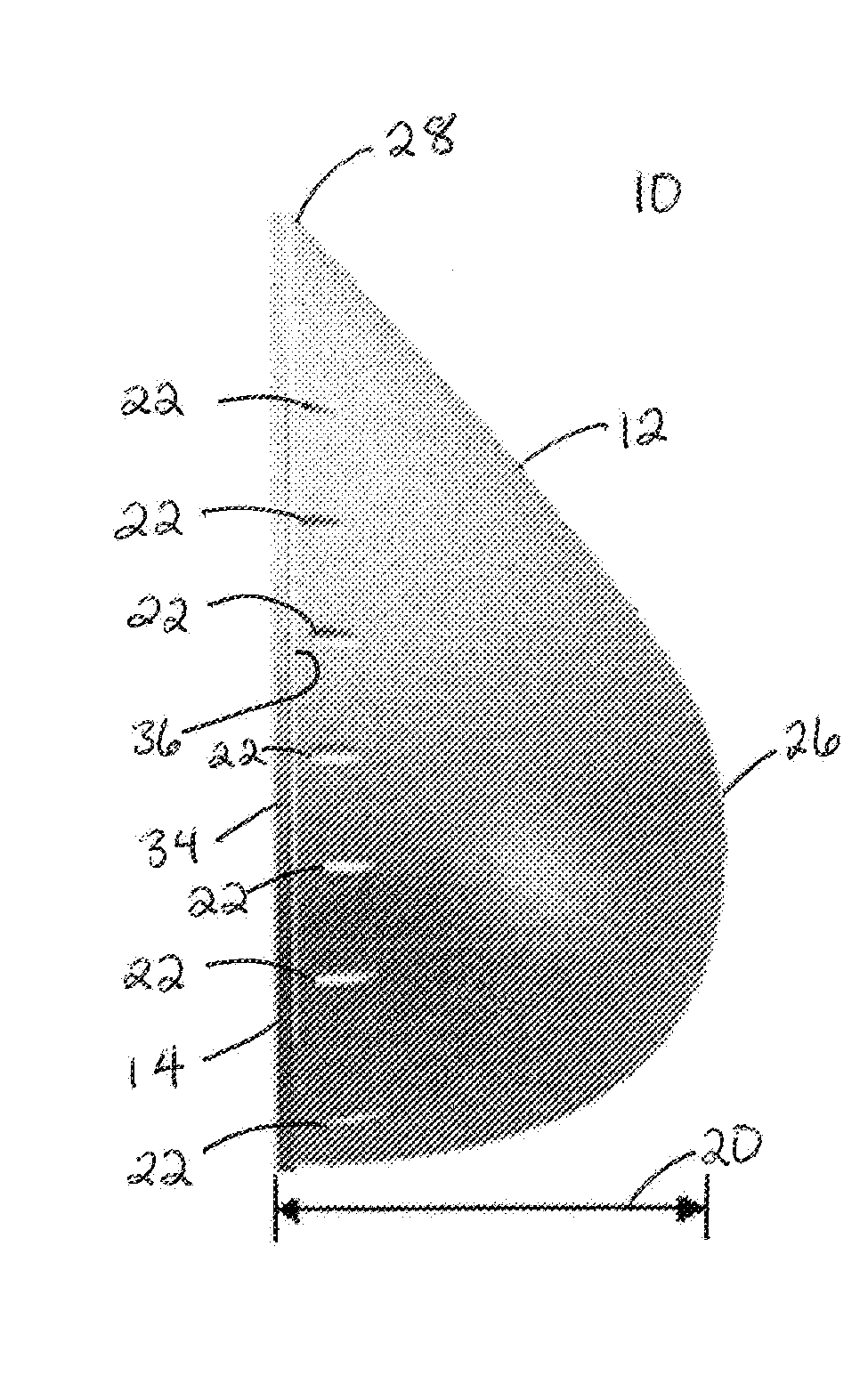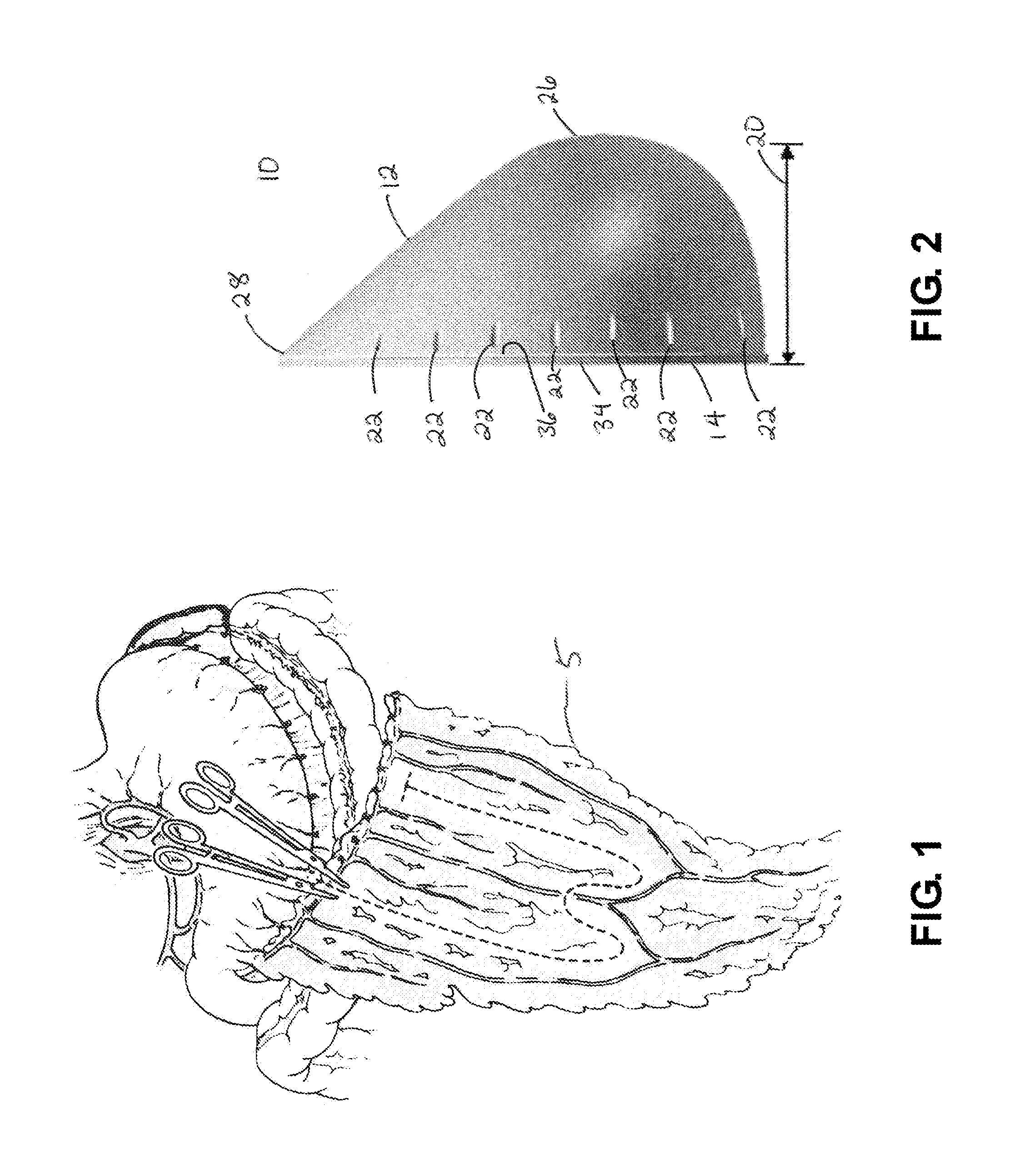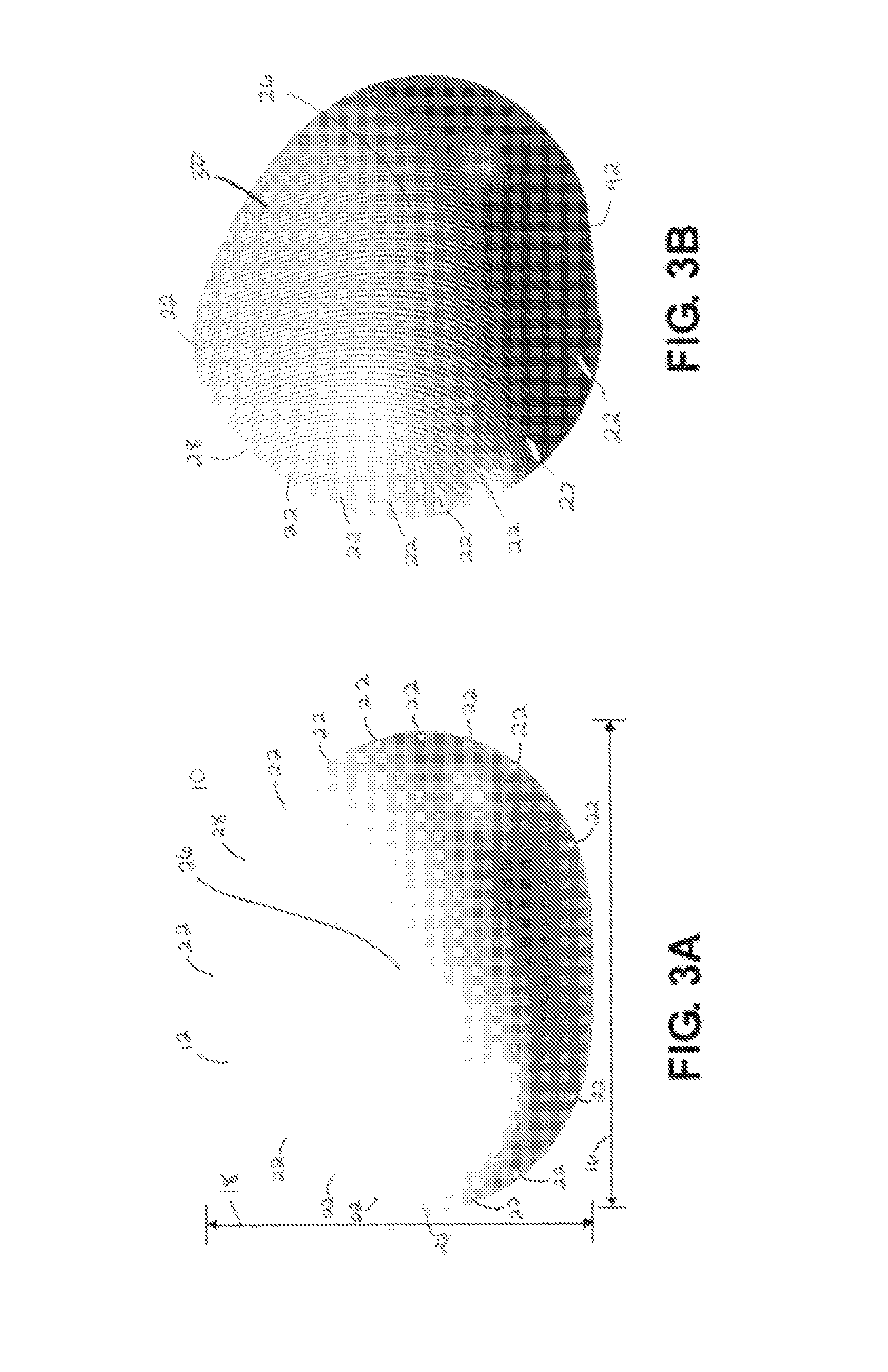Breast Reconstruction Device and Methods
a breast and breast technology, applied in the field of breast reconstruction devices and methods, can solve the problems of reducing the surgical efficiency of breast reconstruction, showing any promise, and increasing the risk of complications, so as to eliminate any hope of robust neo-vascularization and inhibit angiogenesis
- Summary
- Abstract
- Description
- Claims
- Application Information
AI Technical Summary
Benefits of technology
Problems solved by technology
Method used
Image
Examples
example 1
Rat Study
[0101]Preliminary experiments were carried out in Sprague Dawley female rats at approximately 3.5 months in age. Under general anesthesia, an incision was made in the inguinal region of the rat, and a portion of the rat's fat tissue was harvested. This fat tissue was manually mixed with PuraMatrix (Becton Dickinson) in 10 percent sucrose solution. The fat tissue matrix or mixture was placed inside a biodegradable mesh pocket fabricated of Dexon mesh (U.S. Surgical Corporation), and secured shut with sutures. A midline laparotomy incision was made in the same individual rat, its omentum was identified and wrapped around the mesh pocket, and secured with sutures. The rats tolerated the surgery well, and recovered without any complications. Four weeks later, the rats were sacrificed. The mesh pockets with fat inside were placed in paraffin, and Hematoxylin & Eosin, H&E, stained slides were generated.
[0102]The results demonstrated that the fat tissue inside the mesh pocket surv...
example 2
Pig Study
[0104]For a pig study, a 9-month old Yucatan female pig weighing 50 kg was used. Under general anesthesia, an incision was made in the subcutaneous abdominal region of the pig, and a portion of the pig's fat tissue was harvested. A midline laparotomy incision was made, the omentum identified, and placed inside the scaffold. The fat tissue matrix was placed inside the implant between the folds of the omental, and the base and body of the implant was secured shut with sutures. The implant remained inside the pig's abdominal cavity, attached to the omentum blood supply. The laparotomy incision was closed with running sutures.
[0105]The pig was observed during recovery daily by veterinary staff and exhibited no signs of complications. Four weeks later, the pig was sacrificed. The time period of four weeks was chosen because it usually takes at least two weeks to develop histological evidence of fat necrosis. The implant with omentum and fat inside was retrieved. In the breast, f...
PUM
| Property | Measurement | Unit |
|---|---|---|
| median volume | aaaaa | aaaaa |
| median volume | aaaaa | aaaaa |
| thickness | aaaaa | aaaaa |
Abstract
Description
Claims
Application Information
 Login to View More
Login to View More - R&D
- Intellectual Property
- Life Sciences
- Materials
- Tech Scout
- Unparalleled Data Quality
- Higher Quality Content
- 60% Fewer Hallucinations
Browse by: Latest US Patents, China's latest patents, Technical Efficacy Thesaurus, Application Domain, Technology Topic, Popular Technical Reports.
© 2025 PatSnap. All rights reserved.Legal|Privacy policy|Modern Slavery Act Transparency Statement|Sitemap|About US| Contact US: help@patsnap.com



